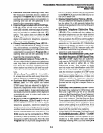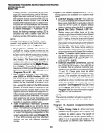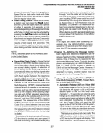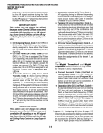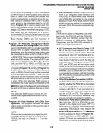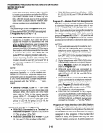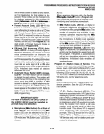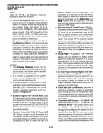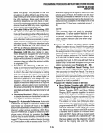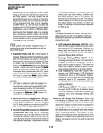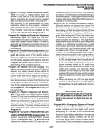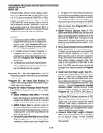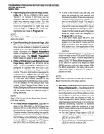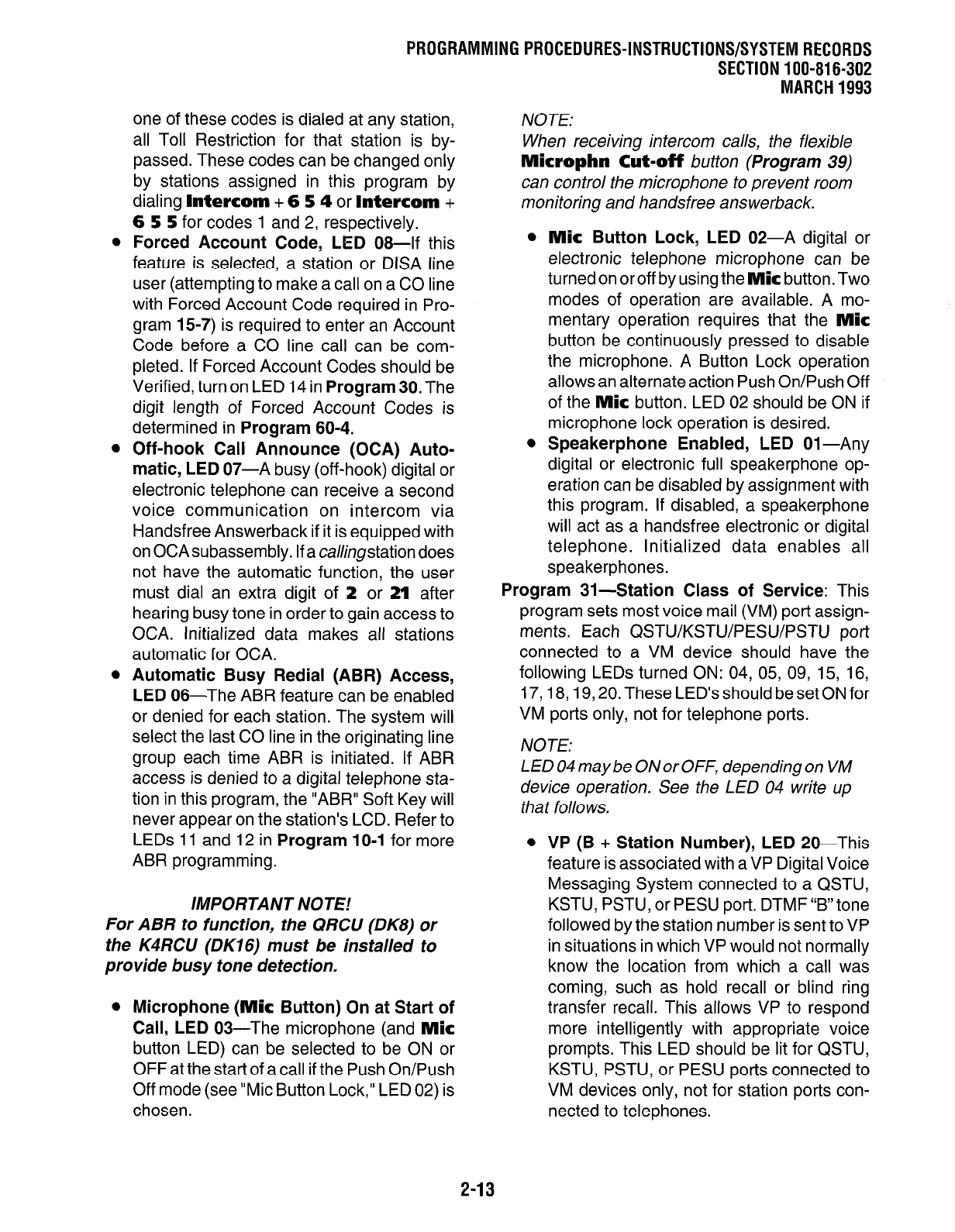
PROGRAMMING PROCEDURES-INSTRUCTIONS/SYSTEM RECORDS
SECTION 100-816-302
MARCH 1993
one of these codes is dialed at any station,
all Toll Restriction for that station is by-
passed.Thesecodescanbechangedonly
by stations assigned in this program by
dialing Intercom + 6 5 4 or Intercom +
6 5 5 for codes 1 and 2, respectively.
Forced Account Code, LED 08-If this
feature is selected, a station or DISA line
user (attempting to make a call on a CO line
with Forced Account Code required in Pro-
gram 15-7) is required to enter an Account
Code before a CO line call can be com-
pleted. If Forced Account Codes should be
Verified, turn on LED 14 in Program 30. The
digit length of Forced Account Codes is
determined in Program 60-4.
Off-hook Call Announce (OCA) Auto-
matic, LED 07-A busy (off-hook) digital or
electronic telephone can receive a second
voice communication on intercom via
Handsfree Answerback if it is equipped with
on OCAsubassembly. If a callingstation does
not have the automatic function, the user
must dial an extra digit of 2 or 2l after
hearing busy tone in order to gain access to
OCA. Initialized data makes all stations
automatic for OCA.
Automatic Busy Redial (ABR) Access,
LED 06-The ABR feature can be enabled
or denied for each station. The system will
select the last CO line in the originating line
group each time ABR is initiated. If ABR
access is denied to a digital telephone sta-
tion in this program, the “ABR” Soft Key will
never appear on the station’s LCD. Refer to
LEDs 11 and 12 in Program 1 O-l for more
ABR programming.
IMPORTANT NOTE!
For ABR to function, the QRCU (DKS) or
the K4RCU (DK16) must be installed to
provide busy tone detection.
l
Microphone (Mic Button) On at Start of
Call, LED 03-The microphone (and Mic
button LED) can be selected to be ON or
OFF at the start of a call if the Push On/Push
Off mode (see “Mic Button Lock,” LED 02) is
chosen.
NOTE:
When receiving intercom calls, the flexible
Microphn Cut-off button
(Program 39)
can control the microphone to prevent room
monitoring and handsfree answerback.
Mic Button Lock, LED 02-A digital or
electronic telephone microphone can be
turned on or off by using the Mic button. Two
modes of operation are available. A mo-
mentary operation requires that the Mic
button be continuously pressed to disable
the microphone. A Button Lock operation
allows an alternate action Push On/Push Off
of the Mic button. LED 02 should be ON if
microphone lock operation is desired.
Speakerphone Enabled, LED 01-Any
digital or electronic full speakerphone op-
eration can be disabled by assignment with
this program. If disabled, a speakerphone
will act as a handsfree electronic or digital
telephone. Initialized data enables all
speakerphones.
Program 31-Station Class of Service: This
program sets most voice mail (VM) port assign-
ments. Each QSTWKSTWPESWPSTU port
connected to a VM device should have the
following LEDs turned ON: 04, 05, 09, 15, 16,
17,18,19,20. These LED’s should be set ON for
VM ports only, not for telephone ports.
NOTE:
LED 04 maybe ON or OFF, depending on VM
device operation. See the LED 04 write up
that folio ws.
l
VP (9 + Station Number), LED 20-This
feature is associated with a VP Digital Voice
Messaging System connected to a QSTU,
KSTU, PSTU, or PESU port. DTMF “B” tone
followed by the station number is sent to VP
in situations in which VP would not normally
know the location from which a call was
coming, such as hold recall or blind ring
transfer recall. This allows VP to respond
more intelligently with appropriate voice
prompts. This LED should be lit for QSTU,
KSTU, PSTU, or PESU ports connected to
VM devices only, not for station ports con-
nected to telephones.
2-13



